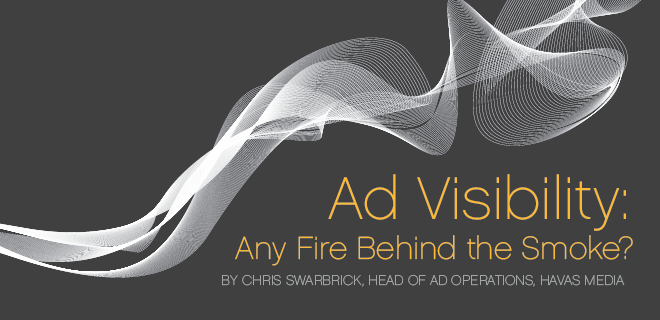
In a year where it’s been pretty much agreed by everyone that nothing of cultural importance is going to happen, we’re going to have to rely on slightly different talking points to keep us interested in a potentially very dull year – and one of these could be Ad Visibility.
Ok, so the measurement of whether an ad was actually seen versus just a cookie dropped may not compare to the Olympics – but it could spark a lot of debate (and opportunity) in our industry this year.
There are a few reasons for this. Firstly, it’s a genuine issue and has started to receive official industry attention, such as the MRC review in the US and the Adserver plans to incorporate it as a standard metric.
Secondly, and possibly more importantly, it has the potential to push the story for why brand advertising should move online.
No other channel can claim to be able to tell you in reality how many of your ads were seen and for how long.
Finally, both the SafeFrame movement and Verification companies have a vested interest in promoting adoption.
It’s therefore easy to believe both planning and trading decisions will incorporate viewability as a significant component in the not too distant future.
Agencies and clients want to be able to optimise delivery to where ads are seen – this will ensure wastage is limited and display delivers the maximum possible value for the budget.
For publishers it’s potentially a means of confirming value, especially in brand advertising; high ad viewability could be a new premium and counter the trend towards commoditisation driven by high supply.
So all done and dusted, right?
In reality, it’s far from that simple and just because more people know about it, that doesn’t mean it will gain significant traction that quickly. We only need to look at the ongoing discussions around attribution versus last click to know that complexity tends to lead to slow adoption.
So, what’s creating the complexity?
Firstly, at the moment there are a variety of methods used to capture viewability data (sometimes used in conjunction) and that makes the whole process a bit of a black box.
Without a single standardised process or neutral arbitrator there’s too much potential for conflict over different sets of reports.
SafeFrames may ultimately provide the solution to this, but it looks likely there is some time to go before that achieves widespread adoption (if ever).
Next, while clients would probably only like to pay for ads seen, they’ve become used to commoditised impression pricing and, especially in DR, may not be willing to pay a premium for higher viewability ads.
Even the definition of a viewed ad is debatable. The IAB set it as at least 50% of the ad seen for 1 second or more but their own display advertising guidelines also allow up to 15 seconds maximum run time – so, for many, one second may be far too low a threshold.
These difficulties in reaching agreement over what should be counted, how, and what should be done as a result will mean that ad visbility will probably continue to be debated this year but won’t become a component of most online display campaigns as many will want to see more standardisation before accepting it.
It’s worth noting, however, that for those that are willing to take the chance this hold up may well offer the chance to seize first mover advantage in what still has the potential to become one of the digital display’s big future developments.